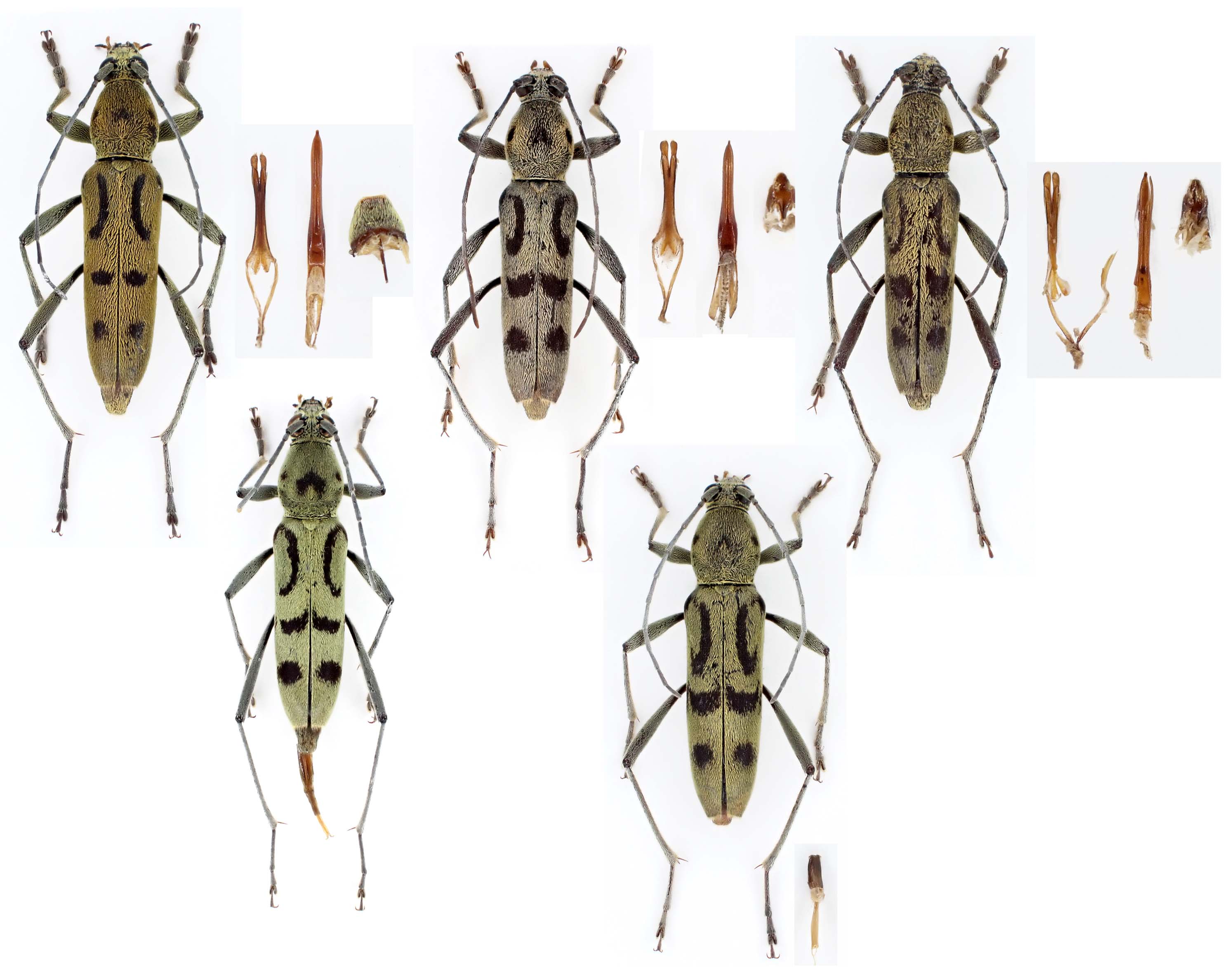| T O P I C R E V I E W |
| Max |
Posted - 25/05/2011 : 20:02:51

Hi, help my, please, with determination, if it possible.
Chlorophorus, evidently, but no other ideas of me...
C Vietnam, Lam Dong prov., nat. park Bi Dup - Nui Ba,
14 mm
|
| 15 L A T E S T R E P L I E S (Newest First) |
| Xavier |
Posted - 13/03/2025 : 17:01:11
quote:
Originally posted by Francesco
....  yes! and see who was the Academic editor... yes! and see who was the Academic editor...   
   |
| Xavier |
Posted - 13/03/2025 : 16:59:45
quote:
Originally posted by Francesco
In my opinion, it could be Chlorophorus ictericus Holzschuh 1991
I have posted here a female from Thailand that may be Chlorophorus ictericus Holzs., with drawings very close to Max's specimen.
|
| Francesco |
Posted - 13/03/2025 : 16:18:13
In my opinion, it could be Chlorophorus ictericus Holzschuh 1991 |
| Francesco |
Posted - 13/03/2025 : 15:52:12
....  yes! and see who was the Academic editor... yes! and see who was the Academic editor...   
In my opinion, it is not very different from the 1st and the 3rd specimen... but the lateral spot of the ^-shaped band is missing...

socius holotype restored |
| Xavier |
Posted - 11/03/2025 : 17:41:28
The holotype of Chlorophorus socius (Gahan, 1906) was published by Zheng-Ju Fu, Lu Chen, Zhu Li, 2024.Taxonomic notes on the genus Chlorophorus Chevrolat, 1863 (Coleoptera, Cerambycidae), with one new synonym and four newly recorded species from China.
None of Max's specimens correspond to this species, which has basal stripes on the elytra beginning on either side of the scutellum, broad round apical spots and a large central black spot on the pronotum.
I have dozens of species of Chlorophorus in my collection, but I have never collected C. socius in Southeast Asia  . . |
| Francesco |
Posted - 10/03/2025 : 10:52:23
I do not think that all these specimens are insidiosus.
C. insidiosus show a acute ^-shaped median band that is absent or transverse in these specimens.
The pattern of the clytini is actually almost stabile (see well-known species as European Chlorophorus or C. annularis).
However, I doubt that a serious identification or systematic of these species can be based on the pattern...
|
| Xavier |
Posted - 10/03/2025 : 07:30:23

396.2áKB
Chlorophorus insidiosus Holzschuh, 1986 is quite variable;Top: males, bottom: two females (Laos and Thailand). The central spot on the pronotum is more or less pronounced, and the apex of the elytra is obliquely truncated
About Max specimens (but without male geniatlia, no way !):
-1st specimen femelle has too short antenna and is another species
-2nd and 3rd specimens could be C.insidiosus
-4th is closer to C.montanus or C.fraternus ? |
| Francesco |
Posted - 09/03/2025 : 16:13:56
quote:
Originally posted by Xaurus
Dear Max, I think yours and my spms belong to C. insidiosus Holzschuh, 1986.
...
According Holzschuh the sps C. arcocarpi, intericus, socius (spec. prop.) and sappho have keels at the inner side of meso- and metatibiae.
I have finally verified my specimen from Myanmar and it shows keels on the femurs.
Nonetheless, this species cannot be C. insidiosus, which is a species similar to C. annulatus (see holotype here).
I propose again C. socius.
Another possibility could be ictericus.
Does anybody know the difference between these species? |
| Max |
Posted - 06/05/2014 : 14:09:28
Dear Xavier, you are right probably.
Thanks!
I`m observe my series of Ch. simillimus (it`s the same group, I`m sure) about pronotal spots - this feature usually mark a males only. |
| Xavier |
Posted - 24/04/2014 : 07:35:17

I'd say female of Chlorophorus fraternus Holzschuh, 1992 for the last one.
Here the picture from Holzschuh's paper. |
| Max |
Posted - 23/04/2014 : 22:10:21

310.22áKB
So, lastly, I must to show this species (from group Chlorophorus like first exemplar of this topic).
Female, ~13 mm, from SaPa env. |
| Max |
Posted - 19/04/2014 : 23:56:27

356.25áKB
This is female of the same species, hopefully.
(Sorry, the picture to be crop as result of my carelessness. But the hind tarsi of this female distinctly shorter then the male).
From SaPa environs, 11.5 mm. |
| Max |
Posted - 13/04/2014 : 16:27:46

387.89áKB
It`s me again
This is a picture of Chlorophorus male from N Vietnam, Sa Pa, 12 mm in length.
In my mind that is more similar to Holzschuh`s type Ch. insidiosus.
But in appearance, that group of Chlorophorus with very long hind tarsi and antennas (maybe in males only? I`m not sure) are look so peculiar. |
| Max |
Posted - 15/03/2014 : 21:53:14
Dear Andreas, depicted beetle have the thin keels at the inner side of meso- and metaFEMUR, not tibia..
In my Vietnamese material there's 3 other exemplars of this group (two different species, I think) and two beetles is very similar to C. insidiosus, really. I'm make a pictures some later.
Thank you so much!
"Occasionally I'll figure the male genitals for some sps of this really not easy group." - that would be great. |
| Xaurus |
Posted - 15/03/2014 : 16:22:52
I capture an old posting, after examine some of my spms from N-Vietnam.
Dear Max, I think yours and my spms belong to C. insidiosus Holzschuh, 1986.
In this group of very difficult species you should examine the male genitals, morphological features for differentiation are not easy to see without good material in comparison. Notice there are spms with black line and suchlike without any drawings at the elytral surface.
According Holzschuh the sps C. acrocarpi, ictericus, socius (spec. prop.) and sappho have keels at the inner side of meso- and metatibiae. Can you check your spms, Max ?
Occasionally I'll figure the male genitals for some sps of this really not easy group. |


